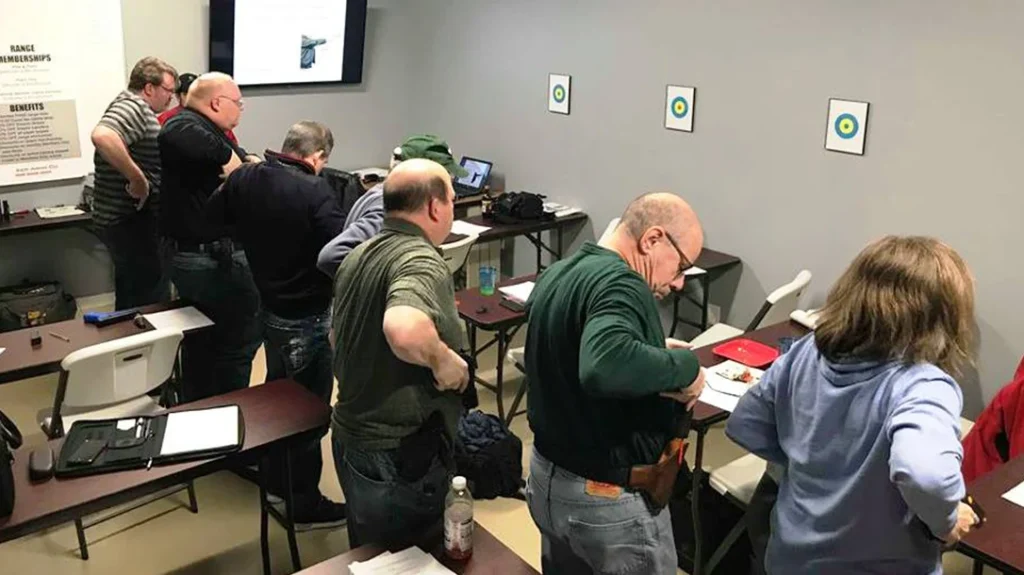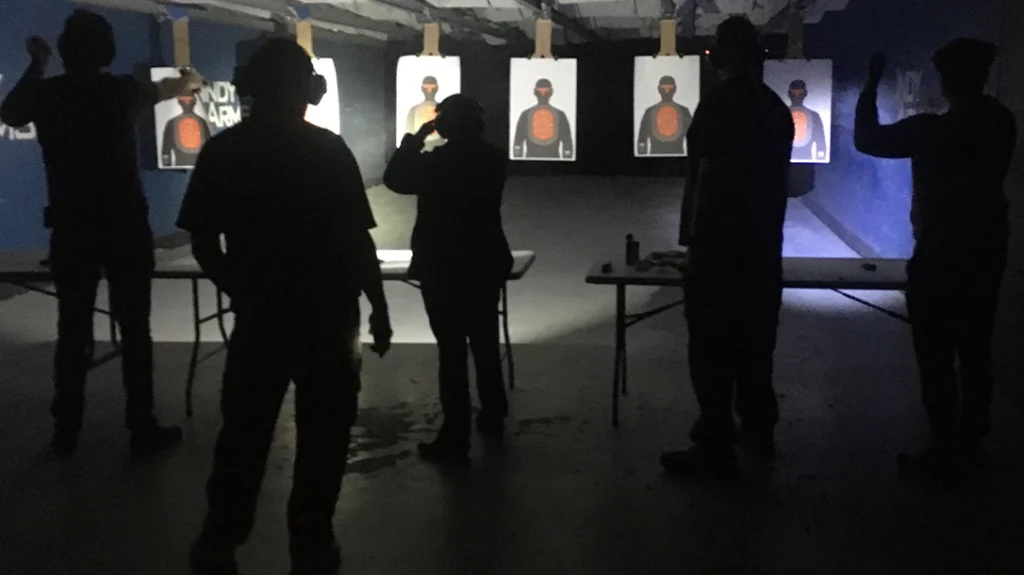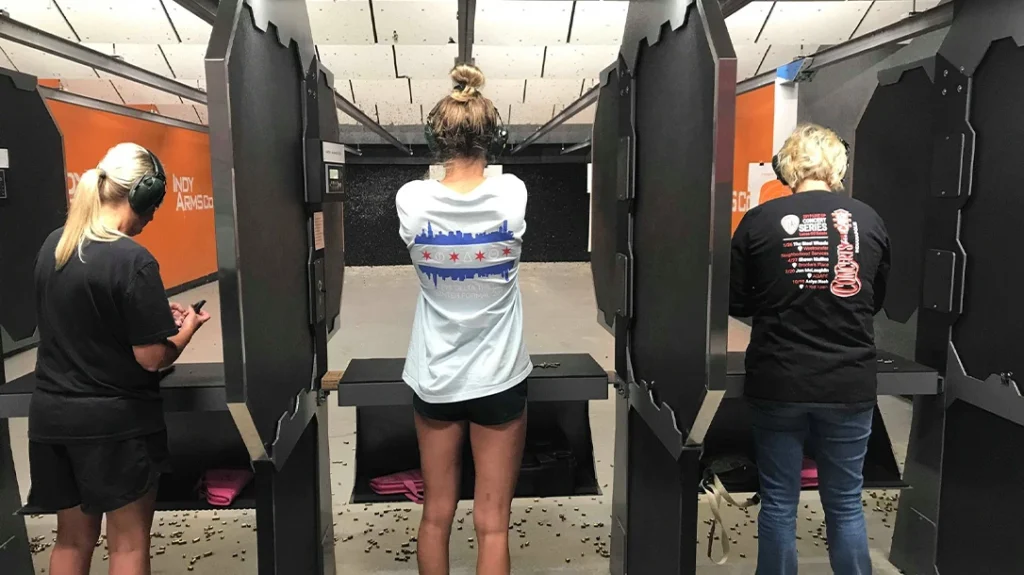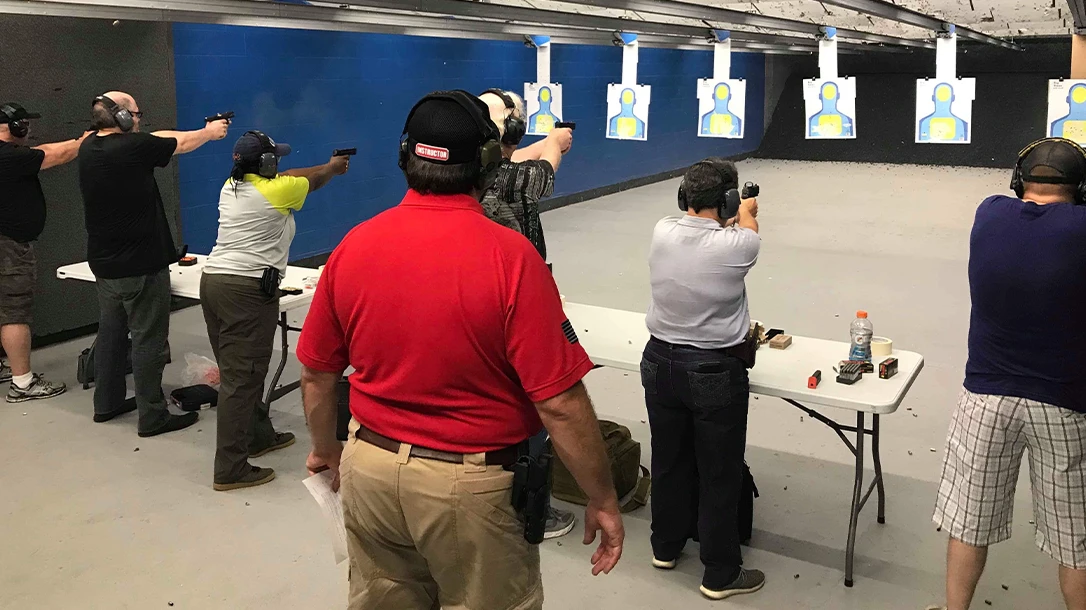During various points in my professional career, I’ve been a university professor, a corporate trainer. And for the better part of three decades, a firearms instructor. Across all aspects of instruction, I have been a huge fan of models that help us conceptualize complex ideas. Good models are designed to not only help people learn, but also they can be used to guide how we teach.
When it comes to teaching firearms mastery and self-defense, I like to conceptualize both the soft (decision making, situational awareness, legal understanding and conflict avoidance) along with hard (physical actions, shooting, handling, manipulations, et cetera) skills as having three distinct levels: fundamentals, mechanics and tactics.
My 3-part model separates and categorizes basic skills that need to be mastered in an orderly progression in order to continue to the next level. Fundamentals are the first level.
Advertisement — Continue Reading Below
Fundamentals include the basics of shooting accuracy and safety. Level 2 is mechanics, which includes manipulations of the gun (loading, unloading, how we carry, drawing, malfunction clearances, etc.) Tactics are the final and third level. Tactics includes situational awareness, use of the environment, defensive shooting, movement–and anything not covered in the other two categories.
Though these three categories can be learned simultaneously, my experience is that for most students it pays to master each level of especially the hard skills before spending significant time on the next. Initially focusing on the fundamentals of accuracy, shooting, and safety will set you up for success when learning mechanics. Likewise having mastered fundamentals and mechanics, makes learning tactical skills much easier.
Defining Mastery
I’d also like to define “mastery” in this context. Mastery can be defined as achieving a high level of skill on a task. It can also denote knowledge about a subject. Both forms of mastery generally result from through dedicated training and practice. Another way to think about mastery is what it takes “to execute the skill or understand something” with ease.
Advertisement — Continue Reading Below
For example, if you have to readjust your grip and fix it every time you grip a handgun, it means that you still have to mentally process the task at hand. Basically, you’re still learning that task. However, if you consistently grip a gun without much thought, you’ve likely mastered that skill.
It starts to become clear why we want to obtain mastery in each category and level before trying to learn something new at the next level.
LeveL 1: Fundamentals
Advertisement — Continue Reading Below
In terms of firearms training, fundamental skills are best described as the concrete physical skills needed to be accurate and safe with a firearm. The first main point is safety, of course. Firearms are dangerous after all. This is also what makes them useful defensive tools.
Thus, gun safety must be the first step when deciding to have access to a firearm–regardless of the reason.
Generally conceptualized as The Four Rules, these include:
Advertisement — Continue Reading Below
- Treating the firearm as if it was loaded (treating it respectfully as a potentially life threatening tool)
- Being aware of where the muzzle is pointing at all times
- Keeping your finger off the trigger until on target and making the decision to shoot
- Being aware of anything before or after your target that you would not want to hit.
Gun safety is often either a single slide in a deck or a 30-second speech before class. But in reality, this set of important physical skills (trigger discipline and muzzle awareness for example) must be second nature before moving on to other areas of firearms handling
Beyond gun safety skills, accuracy skills start mattering as the second step in the fundamentals hierarchy.
We’ve all seen someone rush through shots with poor posture, grip, and sight alignment. Naturally, this results in a poor target. Likewise, you’ve probably seen someone going through these steps very systematically and getting good hits.
Advertisement — Continue Reading Below
That systematic process represents a silent acknowledgement of each step: checking their stance, their grip, their sight picture and then thinking through the trigger press. Again, if you are still having to readjust your stance and grip each time you shoot you likely have not mastered the fundamentals in a way that leads to further learning.
Level 2: Mechanics

The mechanics builds on the primarily hard skills of fundamentals and involves the handling and manipulations of the firearm. This second level also focuses on deploying the firearm from (often holstered, on the body of the carrier) to a firing position. Physical manipulations such as reloading and malfunction clearances also come into play at this level. Thus, mechanics include how we carry, access, and draw a firearm as well as the process of presenting it resulting in a solid base for shooting (grip, stance, sight picture, breathing, and trigger press). Finally, reloads also are part of this second level, whether learning to speed reload (or emergency reload).
Advertisement — Continue Reading Below
If you are still thinking through sight-picture and trigger press (fundamentals) it becomes much more difficult to work your way through an issue such as a malfunction or an empty gun getting it back into the fight. Just as mastery of fundamentals clears the way to learning mechanics, mastery mechanics makes it easier to learn tactics. The goal is to consistently and safely draw and present your firearm while making reloads and malfunction clearances nearly automatic.
Level 3: Tactics

Once students reach the third level, tactics, concepts such as situational awareness and legal concerns will often make their way into the fold. A good instructor will teach these topics in conjunction with fundamentals and mechanics. However, it’s imperative that students master the first to levels prior to taking on the “hard” physical skills of this third level. From experience, these truly are best learned after mastering fundamentals and mechanics. Level 3 hard skills include non-standard firing positions, seated shooting, accessing and use of a firearm within a vehicle, movement while shooting, engaging moving targets, utilizing cover, fighting wounded, low light shooting, along with a multitude of other subjects.
Tactics encompass almost any skill set we can learn for using a firearm in self defense not already learned in the fundamentals or mechanics categories. Just as with the previous categories the goal is to train and practice with each tactical skill until it becomes second nature.
Why We Train
Let’s be honest, we can only directly process so much information at any one time. For example, if we are thinking through our grip, we likely will not be able to also effectively remember how to best use cover. If we are having to think through muzzle awareness and trigger discipline, we will likely not be able to quickly address a malfunction.
On the other hand, if we can see these effects in the relatively low stress environment of training classes, the issues could only become much worse in a high-stress, real-world defensive encounter.
Well-trained defensive practitioners don’t need to burn up brain power on the basics. Instead, they “save” thinking-power for the task at hand.
Automaticity is key.

Here’s the bottom line. The more we get these skills to a consistent, safe, second-nature stage, where not much conscious thought is required, the more we reserve such thinking to making good choices and decisions in a high stress encounter.
As we continue to train and practice, we also continue to further re-enforce previously learned skills. My hope is that using these categories will help you with your own training and practice. I also want this three-level system to highlight the mastery needed at each step in order to move forward.


